You may have heard of mead before or maybe you haven’t, but one image that always seems to come to mind when mead is mentioned is Vikings drinking their grog. I don’t know a whole lot about Vikings, but I do know a bit about mead! Mead is a fermented honey and water mixture, some call it honey wine, and it is quite possibly the first fermented drink that humans purposefully made. Luckily for us, it’s quite easy to make your own mead! I’m going to show you how to make one gallon of mead with this simple blueberry orange mead recipe.
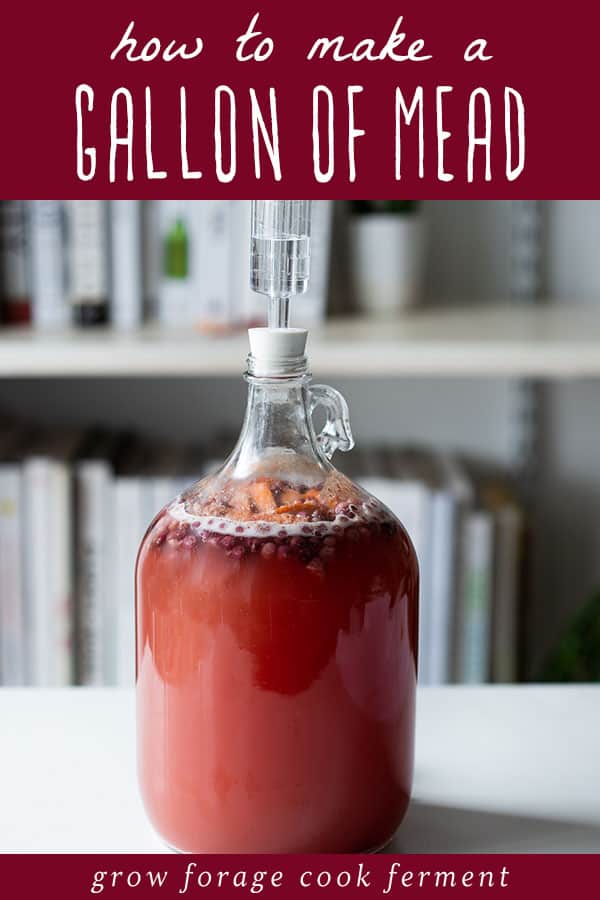
Want to save this post for later?
Simple Mead Making eBook
Want to learn more about making mead? I have a Simple Mead Making for Beginners eBook just for you!
It has ingredient and equipment checklists, detailed instructions for brewing and bottling your mead, and simple mead recipe ideas! Be sure to check it out if you’re new to the mead making process and want a step by step guide.
One Gallon Mead Recipe
Here is my simple method for making one gallon of mead!
What is Mead?
Mead is a fermented alcoholic beverage that is traditionally made with just honey and water, and maybe some yeast (wild yeast is often used).
Whenever you add fruit to mead it’s technically called a melomel rather than mead. I still usually default to calling it mead, though.
You could also use apple cider instead of water and then you’d have what’s called a cyser. If you add herbs and spices or other flavorings it’s called a metheglin.
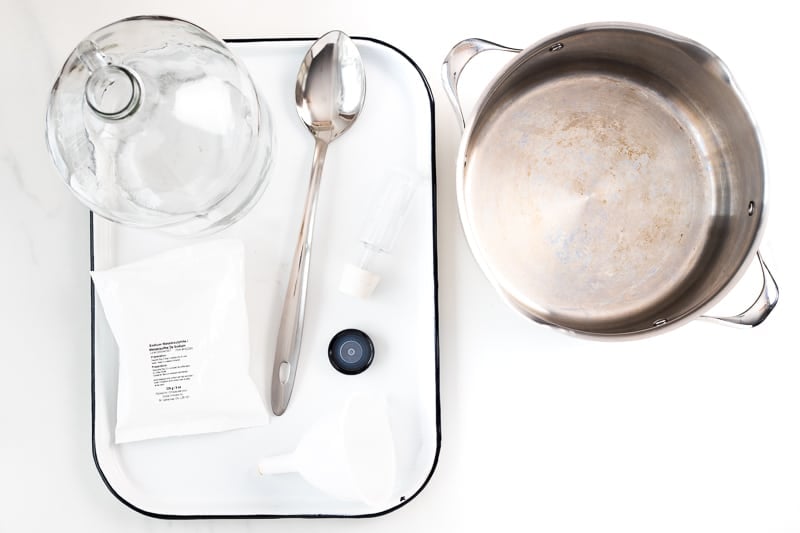
Mead Equipment and Ingredients
There is some special equipment and ingredients that you will need to make this mead.
Rather than list it all here, I’ve created a page that has links to all of my favorite mead ingredients and equipment: Mead Equipment & Ingredients: Everything You Need to Get Started.
There you will find links to the sanitizer, brewing jugs and buckets, airlocks, yeast, tubing, bottles, and honey and I recommend!
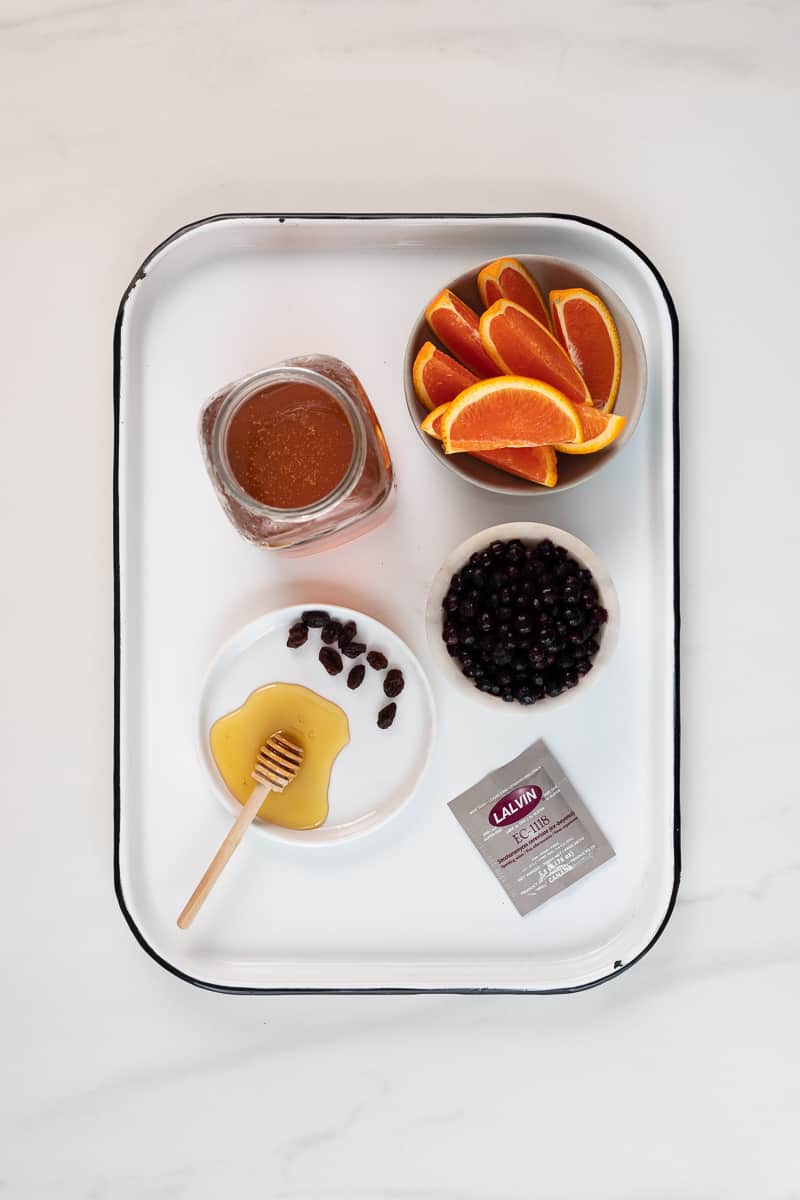
How to Make Mead: One Gallon Mead Recipe
Alright, let’s get started on making this mead!
This is a recipe for one gallon of mead, but I’m always of the mind that if you’re making one you might as well make two.
You can split a package of brewing yeast up between two jugs (one package can make up to 5 gallons of mead).
Sanitize Everything
The first thing to do is sanitize everything that will be used in the brewing process: the jug, airlock, big pot, spoon and funnel.
Simply follow the directions on the sanitizer and don’t throw it out until you’re totally done (just in case your dog licks the funnel or you drop your spoon).
Make the Mead Must
Once everything is sanitized, put about 1/2 gallon of non-chlorinated (filtered) water in a large pot on medium heat. When it’s warm, but not boiling, add the honey and stir until it dissolves.
Using two pounds of honey will make a very “dry” mead (not sweet), while three pounds will create a sweeter mead.
The type of yeast you use will also affect how dry or sweet the mead is.
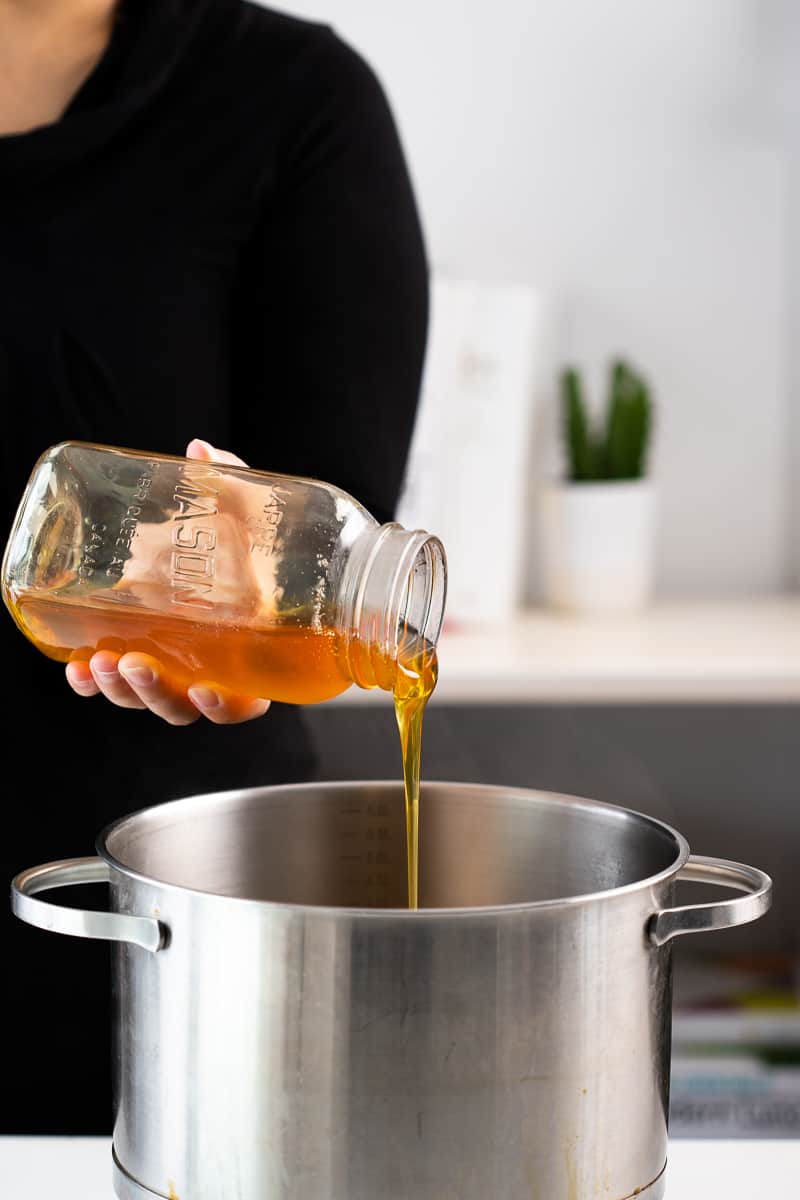
Turn the heat off. It may be a little foamy, but that’s ok.
In the meantime, put the berries (or any fruit of your liking), orange slices (skin and all), and raisins into the one gallon jug.
Raisins are added as a natural nutrient for the yeast. You will not notice any flavor from them in the finished mead.
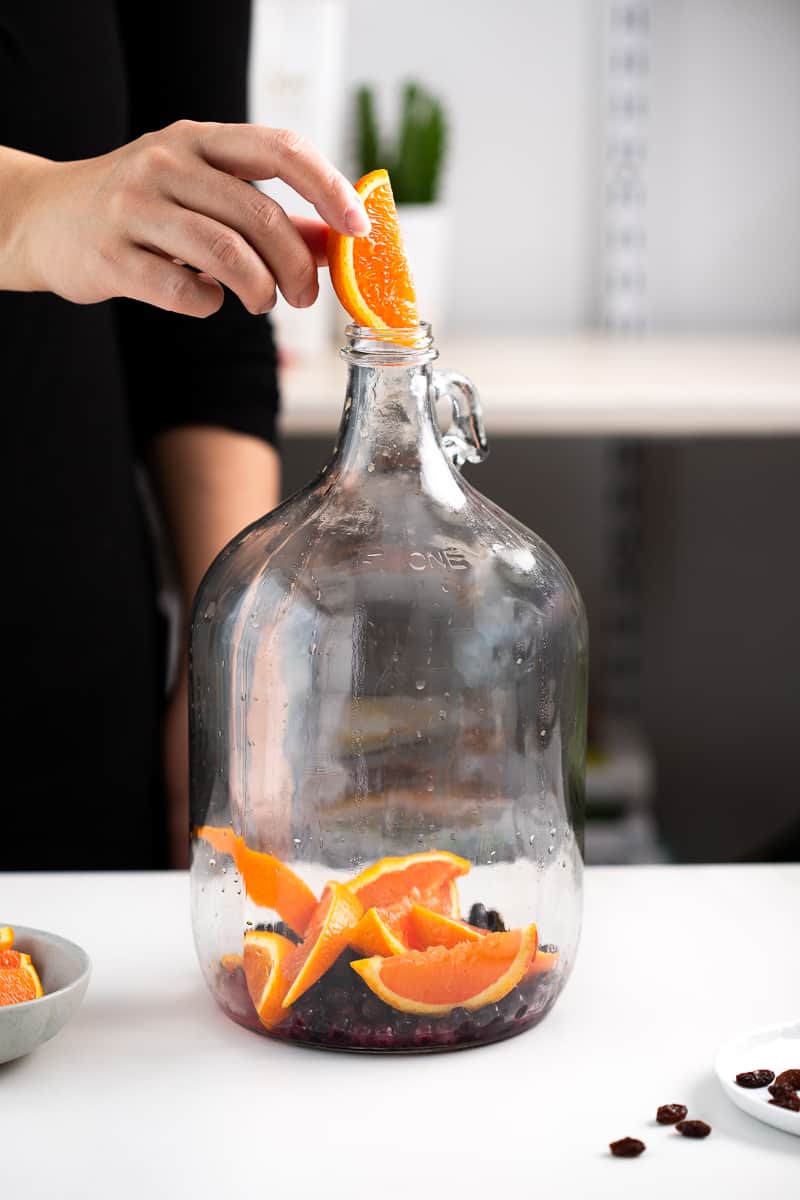
Then, using the funnel, carefully pour the honey water mixture (technically called “must”) into the jug.
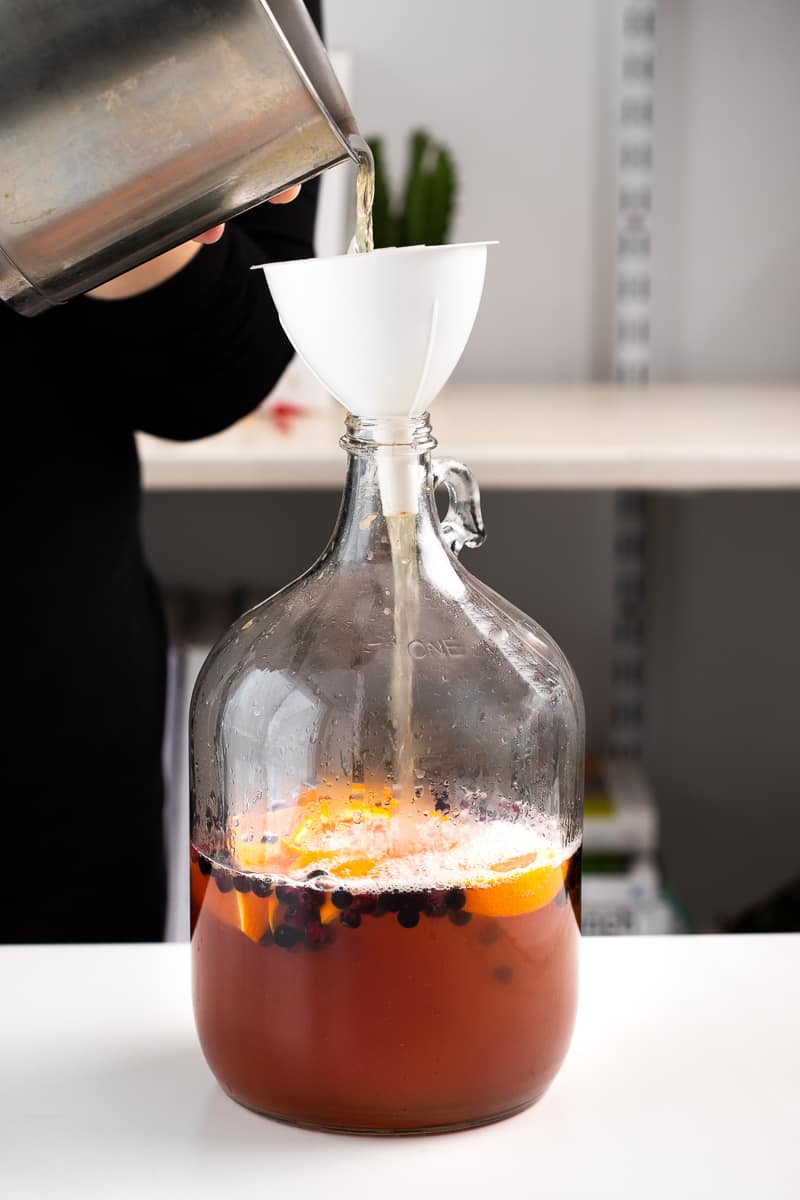
Top off the jug with cool non-chlorinated (filtered) water, leaving at least 2 inches of head space on top.
Then put the lid on the jug and gently mix everything around a bit. If you bought a jug that came with an airlock it may not come with a lid, so you’ll have to find a lid that fits or improvise a bit here. A solid cork (without a hole for the airlock) would work.
Pitch the Yeast
The next step is to add the yeast, but you need to make sure that it isn’t too hot, which will make your yeast inactive. It should feel lukewarm, no more than 90° F (32° C). I recommend using a thermometer before adding the yeast to be sure.
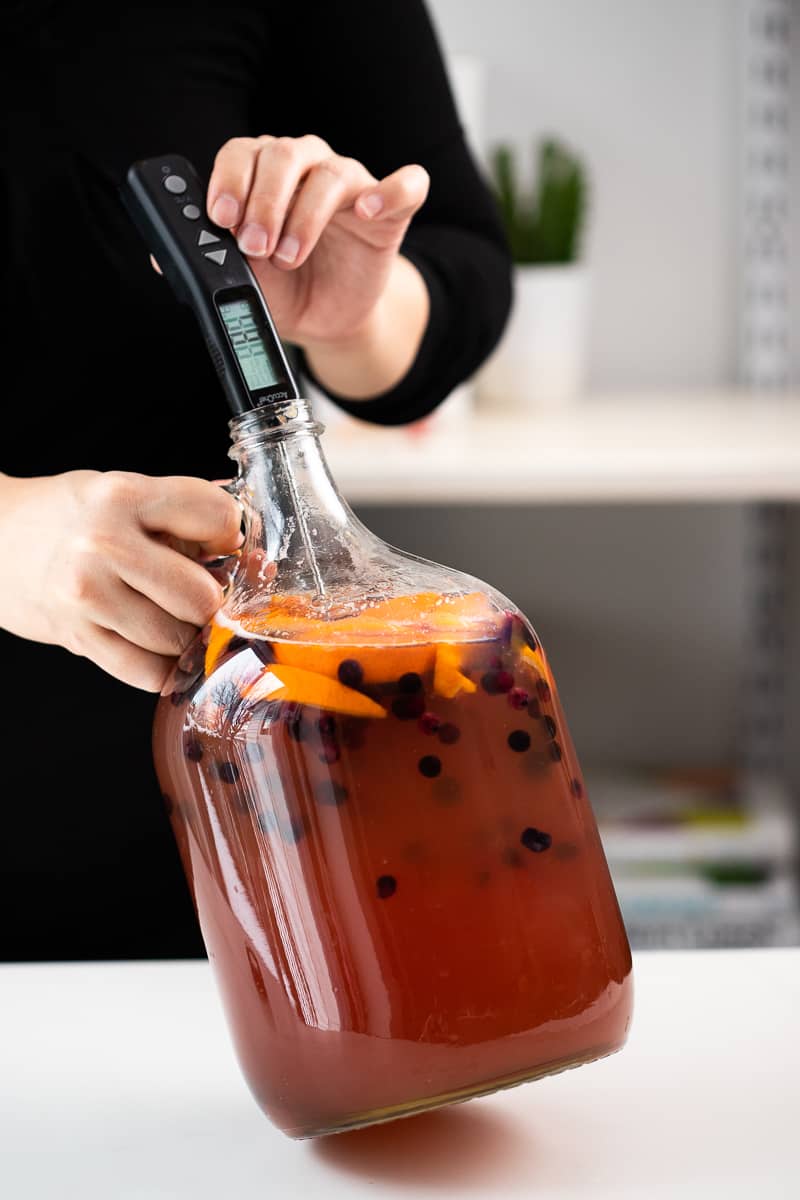
Once it is less then 90° F you can pitch the yeast into the jug.
You don’t need to use the whole package of yeast for one gallon, 1/2 package is enough (it doesn’t have to be an exact measurement). Store the opened yeast package with the remaining yeast in an airtight zip top bag in the refrigerator for later use.
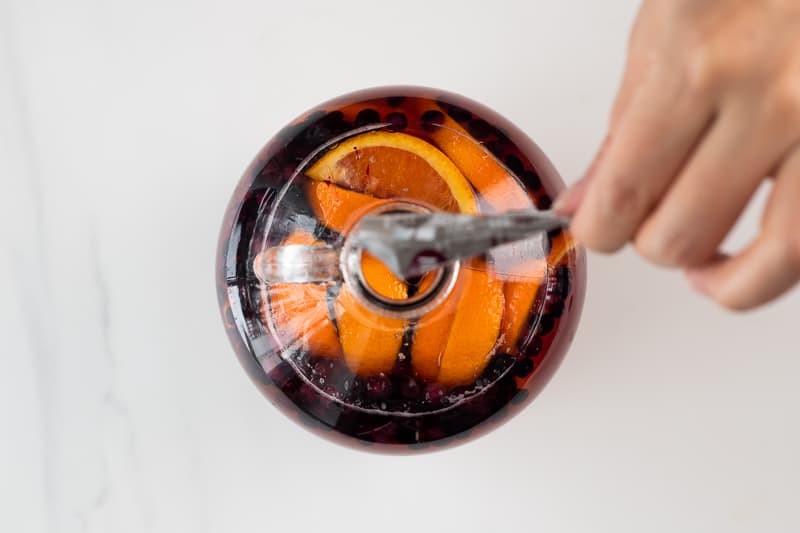
Now the fermentation fun can begin!

Once you’ve pitched the yeast, put the lid back on tightly and this time you’re really going to shake it up for several minutes.
It’s a good workout for your arm muscles, so you can skip the gym on days when you make mead!
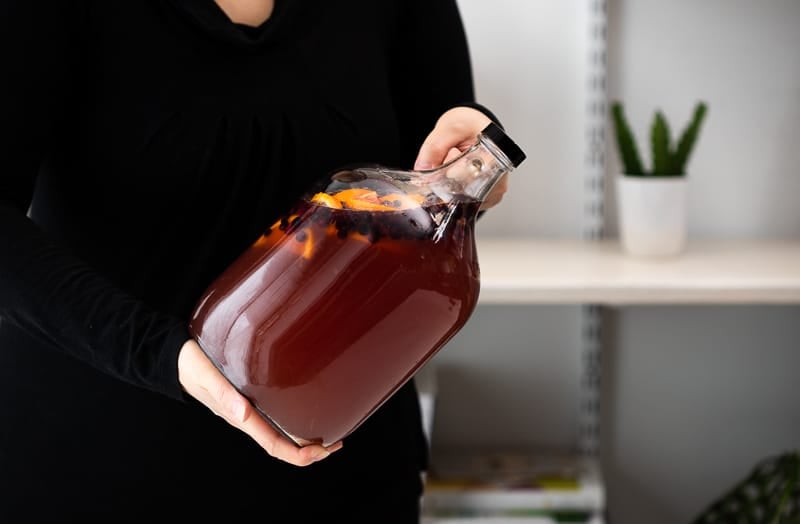
Add the Airlock
Put a little water in the airlock to the line, then put the rubber stopper into the jug.
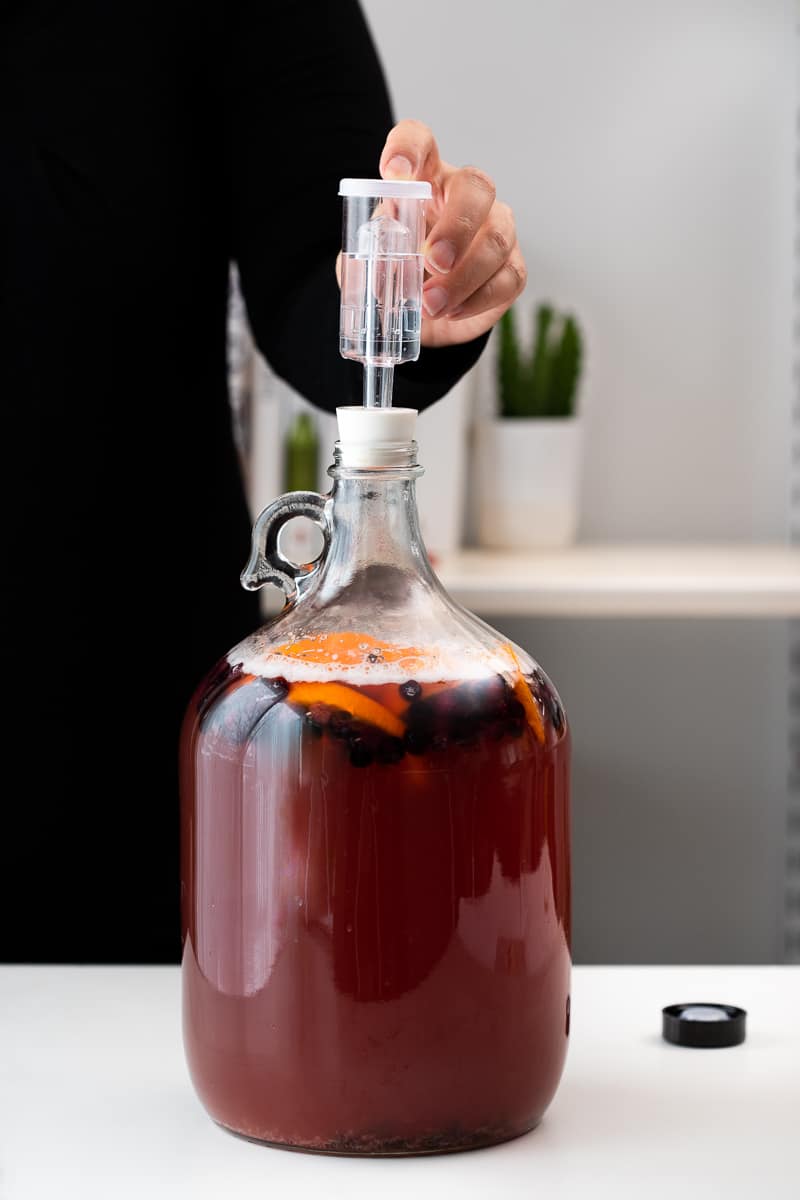
In a few hours you should start to see bubbles forming in the jug and in the airlock.
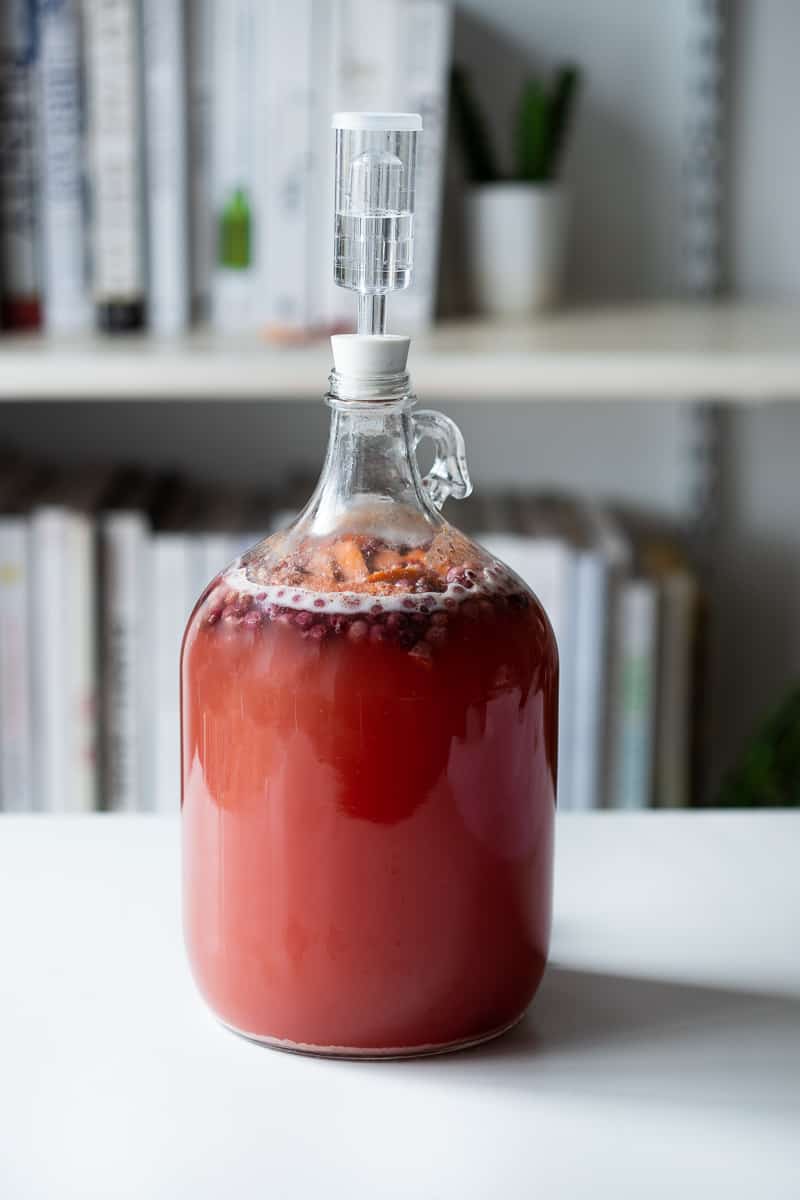
After several hours or overnight, you may see a lot of bubbles rising up the neck of the bottle! The whole top might get a little foamy at first, but things will settle down.
Don’t worry if the bubbles rise up into the airlock for the first couple of days, that just means that you have a very active (and happy) batch of mead! You can periodically remove the airlock to rinse it out, then replace it back into the jug.
I love watching all the little bubbles! Fermentation is so cool.

Set Aside to Ferment
Keep the jug in a cool (not cold) dark place out of direct sunlight to ferment.
Mead can take longer to ferment than hard cider or beer, depending on the ambient temperature it will take anywhere from 3-6 weeks.
I usually give it 5-6 weeks before bottling to be on the safe side, as you don’t want any broken bottle explosions! I’ve definitely had some very champagne like mead before.
You want to wait until you don’t see any bubbles in the jug and your airlock is still before bottling.
Bottle the Mead
Bottling one or two gallons of mead is the same process as bottling hard cider. Follow my tutorial there to get a detailed process.
You may want to wait a while to drink your mead as it definitely gets better with age.
I often drink it “green” (young) as I enjoy it either way. It is fun to save a couple of bottles for several months, or even a year, just to see how the taste changes with age.
More Mead Recipes
Now that I’ve shown you how to make this simple one gallon of mead recipe, chances are you will want to make more soon!
I have written posts on How to Make 5 Gallons of Mead and How to Bottle 5 Gallons of Mead if you want to try making a larger batch.
I have one gallon mead recipes for Wildflower Mead, Dandelion Mead, Blackberry Mead, Elderberry Mead, Elderflower Sparkling Mead, and Maple Orange Mead that are all delicious and follow this same basic mead recipe.
See my post on 15 Easy Mead Recipes for Beginners for even more!
If hard cider is your thing, see my posts on brewing hard cider and making hard cider with wild yeast.
Be sure to check out my Simple Mead Making: A Beginner’s Guide to One Gallon Batches eBook for more detailed information on brewing, bottling, and recipe ideas!
Cheers and happy mead making!
Simple One Gallon Mead Recipe
Equipment
Ingredients
- water non-chlorinated or filtered
- 2-3 pounds honey depending on how sweet you want to end product to be.
- berries or fruit of any kind fresh or frozen, about a cup
- 1 orange
- 10 raisins
- 1/2 package champagne yeast or other wine yeast
Instructions
- Sanitize everything that will be used in the brewing process.
- Heat about 1/2 gallon of non chlorinated water in the pot on medium heat. Once it's warm, but not boiling, add the honey and stir it so it all dissolves. Turn off the heat.
- Put the berries or other fruit, orange slices (skin and all), and raisins into the one gallon jug.
- Use the funnel and carefully pour the honey water mixture into the jug.
- Top off the jug with cold (preferably filtered) water, leaving at least 2 inches of head space on top. Put the lid on the jug and gently mix everything around a bit.
- Make sure that the temperature of the must is below 90°F, then add 1/2 packet of champagne yeast. Put the lid back on tightly and this time shake the jug for a minute or two to distribute the yeast.
- Put a little water in the airlock to the line, then put the rubber stopper end into the jug. Put the jug in a dark place. It should start bubbling within 12-24 hours.
- After about 4-6 weeks of fermenting, once all bubbles have stopped rising in the jug and airlock, the mead can be bottled and aged.
Notes
- Please see my Mead Equipment and Ingredients page for a detailed list of what you need to get started.
- Use my tutorial on Bottling Hard Cider to bottle the mead - the process is the same. The flavor of homemade mead will improve after bottling and aging.
- My Simple Mead Making eBook is a helpful resource if you are just getting started with making your own mead.
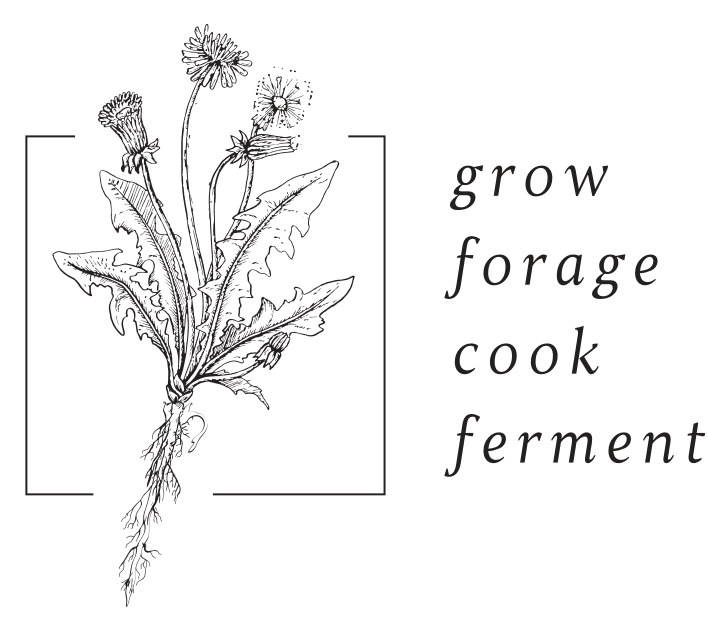
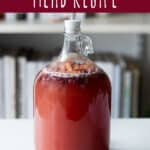
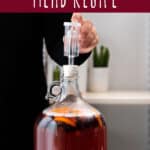

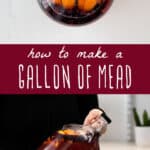
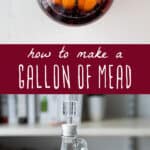
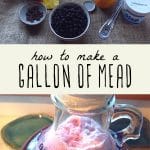
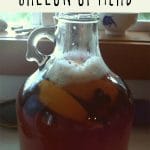
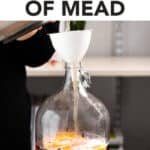
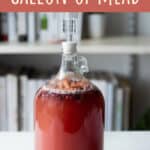
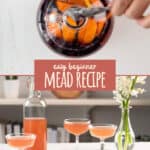

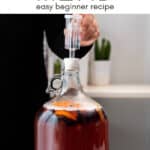
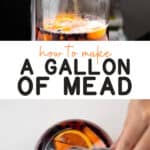

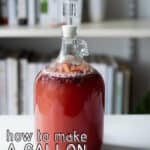
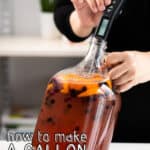
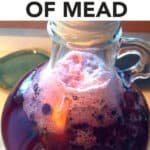
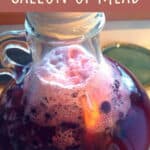
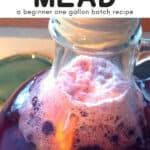
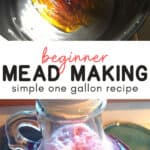
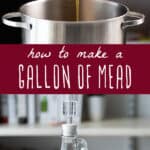
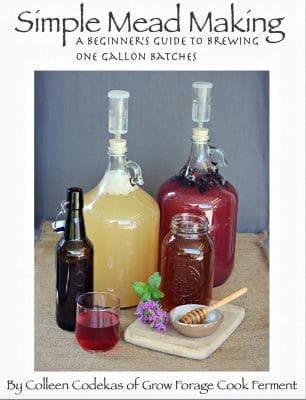
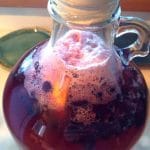

Hi, new to this in that I have only had our hive for a month but realise that as there is only Marg and I, we will have an excess of honey that would be good to use in a value added sense. Is there a potential problem in producing methyl instead of ethyl alcohol; whats the best way to deal with this if it is an issue.
terry
Hi Terry,
To my knowledge methyl alcohol is only produced when spirits are produced and the “wash”, be it sugar, potato or grain based, is heated above 280°C. I am yet to try this recipe but must admit I’m feeling jealous you have been able to set up your own hive! I hope your brewing goes well!
I don’t see any bubbles after 4 days.
Normal?
Hello,
This is incorrect, methanol is produced during fermentation no matter what. The formation of methanol is in no way specific to the production of spirits. All that the distillation of spirits does is concentrate the ethyl and methyl alcohols already present in the initial wash.
Also, no normal distilled spirit intended for drinking is ever raised to 280°C as ethanol evaporates at only around 78°C. You might be confusing ethanol distillation with the historical practice of producing methanol from very high temperature distillation of wood.
However, the amount of methanol produced by fermentation of sugars is very, very small. Negligibly small for any normal recipe.
The methanol risk with distilled spirits is primarily due to the concentration of it being raised by distillation, so incompetent distillation can raise it to dangerous levels. No new methanol is produced during distillation. Even then, the main historical risk of methanol poisoning from spirits was from unscrupulous moonshine distillers intentionally contaminating their spirits with wood alcohol to cut costs.
Unless you are distilling spirits or attempting to drink wood alcohol there is no risk of methanol poisoning.
How much is half a yeast packet?
Made a batch about 4 years ago. In cellar for 1:5 years. Then bottled. Crystal clear. Then another 2.5 years later opened one of 6 bottles. WOW. To all – try all fruit and try others. Great recipe here to start. Thanks
I’m at the 6 week mark of fermentation but there is the odd bubble in the airlock (about 1 every minute) is it safe to bottle now or should I wait longer? I’m using glass bottles so dont want to risk explosions. Thanks.
Hi Jordan, I raised this question myself recently and was informed that the air bubbles do not always confirm continued fermentation but can show temperature changes. If you have used a hydrometer to calculate ABV take a measure and 1 week later repeat. If there is no change in value fermentation has finished and you can process when you are ready. I hope this helps and all goes well with your brew!
I would like to make a ginger mead. Has anyone experimented with that ?
I am currently making a spiced mead with cinnamon, cloves and fresh ginger…gotta wait a couple more weeks and can update you on the final outcome! :)
I’d love to give it a try. Is there any way to control the percentage/strength of alcohol? I’d like it to be on low side. I’m not really good at drinking alcoholic beverage….
Thank you!
Use potassium sorbate to halt the fermentation process sooner. Using a hydrometer you can check the sugar levels which also translates to alcohol content. The yeast uses sugar to make alcohol so if you stop it sooner it will be less potent, but a much sweeter mead.
Did you ever figure out how to control the ABV ?
Do you have to use an airlock or will a balloon work just as well?
Balloon will technically work, but you’d be saving yourself a lot of potential headache, time and money to just buy an airlock off Amazon for a few dollars, or go to a local brew meet that sells supplies. They are $2-$3, and last forever.
OR, if you really don’t want to but one, use a piece of plastic tubing of some sort, and stick one end into the jug, then hot glue the crap out of the opening so the tube stays in place and air can’t get in. Then stick the other end of the tube into a glass of vinegar or sanitizer…. or alcohol. Boom… air lock.
Hello,
So i am about to attempt this recipe, i am using D47 yeast instead of the champagne yeast. Will that affect the process or just the flavor profile?
does this make a draft mead or a wine mead
I’m not sure exactly what you are asking here, but I would say it’s more of a wine mead.
Hi, this my first time making mead and after using this recipe I’m only four days into fermentation and I’m noticing a light brown accumulation at the surface and not much bubbling. Is this a sign that the batch is going bad? Any help would be greatly appreciated.
Hi Mike, I doubt the batch is going bad. Did you see bubbles at all in those first few days? Is it still bubbling? Some brown scum and accumulation is normal.
I am having the same problem. I am making a 50% honey 50% maple mead. I used an half pack of yeast from last year and it didn’t produce any bubbles. So I added a half pack of new yeast. Still no bubbles. I am not sure what to do. I also have another batch going that is bubbling just fine.
Do I add more yeast. Thanks Rick M
Hi. I have a 3 gallon carboy. Can I use it for a 1 gallon batch or should I make 3 gallons? If so, should I triple everything? So sorry about all the questions but I am a total newby. Thank you so much.
Hi Donna, it would be best to just make 3 gallons as you don’t want a ton of airspace in the jug during fermentation.
I have used this recipe repeatedly, always with good, and sometimes GREAT results! Thank you for sharing, looking forward to getting your ebook soon!
Sounds great, however I must avoid any alcohol . Any suggestions ?
Sounds like you don’t know what mead is then…
Suggestion: don’t make this.
I actually have an interest in de-alcoholizing drinks! Note that I have never actually tried this, but merely spitballed with my father as a theoretical interest.
You could try freezing it and then draining/straining out the alcohol–alcohol has a lower freezing temperature than water.
You could leave a glass of mead out and the alcohol should evaporate away.
Or you could try heating it at a low temperature to cook the alcohol out; this method has the highest likelihood of altering flavor.
This is my second time working with this recipe, first time went great! This time I infused the honey with cannabis first so I’m excited to see how the terpenes influence the flavor profile (I live in Colorado). Thanks for the info!
How did infusing the honey with cannabis turn out?? I’ve wanted to give it, but would be nice to hear from someone who’s tried it :)
I started this recipe at the end of January. It’s now at the aging phase. It smells bitter like the orange peels. Is that normal and will it subside?
Is it necessary to add berries/fruit or will it work with orange and raisins. If it is necessary, which berries or fruit go well in this?
You do not need to add the berries or fruit, but I find that it does make the mead taste better. Any berries work great!
Hi sorry probably a very silly question but how soon can you drink it? i know its better to have it age but wondering how soon it can be drunk
You can drink it as soon as you bottle it, but even waiting a week or two will greatly benefit the flavor.
Is the orange necessary? Or is it just for flavor? I got everything but the orange and am ready to get started and to lazy to run back out for it
how do you if something went bad,it taste weird hard to explain I used a lemon instead of orange
Hi,
My mead is almost at six weeks and this is my first time making it. I only had 2 0.5 gallon glass jugs, so I just split this recipe between them, I hope that’s going to work. My mead doesn’t seem to be bubbling anymore, does that mean it’s done? Also, can I bottle with mason jars? They’re the only thing I am able to get my hands on. If so, how should I do so? I also do not have access to an auto siphon or a way to buy one, can I just use a strainer or cheesecloth?
Thank you!
Hello! I found your recipe and made 2 gallons yesterday afternoon. This morning, I found both gallons with the corks and water seals off and foam bubbling out the top. I rinsed out the waterseals and rinsed off the corks. Before I recorked I poured off a small bit of the liquid. Should I re-top each of the gallons with cold water or just leave them be? I had them in a dark cupboard . I did see a fruit fly buzzing around too. Do i have to waste both gallons?
Hi Christina, that is completely normal and it should die down within a day or two. Your yeast is very happy and fermenting away! You can add more water if you want, but it’s not necessary.
I had the same problem. It kept popping out. My cork was the wrong size and I went down to a smaller one. I had to Jam it way in below the top of the bottle edge. The other problem I had was the water was not full enough on the top of the Air trap. I could not see if there were bubbles. I actually had to add more raisins to start the fermentation not more yeast. After I did all that a foam started on the top and it started to bubble. (This was a Maple Syrup/Honey mead.)
I followed the recipe and was very careful to sterilize everything with the bleach method. But about a week into fermentation, I noticed a grey accumulation around the raisins. It looked suspiciously like mold, but I wasn’t sure. So I waited to see if it grew or went away. It did neither. I’m at the five-week mark. Fermentation is slowing down, but still there. (As evidenced by bubbles in the airlock.) The raisins are still surrounded by a grey something. Is that normal? If it’s mold, I’ll toss it out, but I’d hate to waste it all if it turns out it’s normal for the raisins to have a grey accumulation around them.
It sounds to me like it’s just dead yeast, also called “lees”. Mold won’t grow within the liquid like that, and at this point the mead has a decent alcohol content, so I wouldn’t worry about it. Fermenting often creates strange sediments, but as long as it’s not fuzzy mold on the surface everything is usually fine.
You talk about how much honey, water, yeast to use but don’t say how much fruit. Please don’t say use as much as you like we need a starting point.
The recipe says to use about one cup :)
Hi. I’m getting ready to make this. I’m using a local orange blossom honey. I was wondering if you have come across any recipes for molasses beer or ale. I have some in the cabinet I’ve been trying to find a use for, and I’m thinking of using it to make a stout or ale. Have you run across any quick and easy recipes for that yet? I haven’t really started searching yet.
I am 6 weeks into the fermentation and I still have some bubbling in the airlock. It is very slow (1-2 bubbles per minute). Should I still wait until the airlock is completely still?
Hi, I stumbled upon this recipe a month ago. And I just bottled my first batch. I didn’t have a hydrometer at the time, though I do now, and I’m learning about testing the gravity. If you use one, do you know about what starting gravity you get with this recipe?
If you don’t know, I’ll probably follow this recipe again, and I’ll post what I find.
Hi Cam,
Due to the nature of honey being different sugars and water contents, it is nearly impossible to get the same SG readings even if you use the same amounts of water and honey.
I just made this and I got an OG of 1.062
Have made some wine , Wanted to try mead came upon your site so I started 10/29/2017 hopefully it goes well. used 3 lbs raw texas honey , orange and 1 1/2 cups of frozen blueberries.
As a German I am confused! ;o)
About which gallon we talk?
In Germany we count in liter .
A british gallon has 4,55 liter.
A US. gallon has 3,79 liter.
US gallon :)
Hi I have a question. I am getting ready to bottle a gallon of mead. There is sediment on the bottom and yeast and fruit on the top. What is your process for bottling in this case? There are no more bubbles and the cap is still.
I use an auto siphon and bottling wand, if you follow the link above to the bottling page you will see more info about that.
Can I use different citrus? I happen to have some ruby red grapefruit on hand.
There is some sediment at the bottom of the jug is that normal or did I screw something up?
Nope, the sediment at the bottom is totally normal!
I have some sediment that appears on the sides of the bottle also, is this a normal step?
Thanks
Sediment is likely seeds and lees (dead yeast that falls to bottom). The lees can be an inch or more.